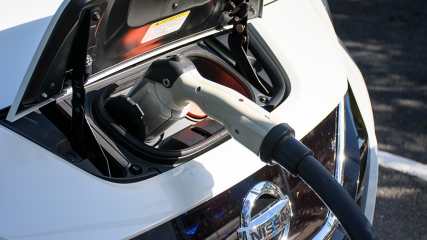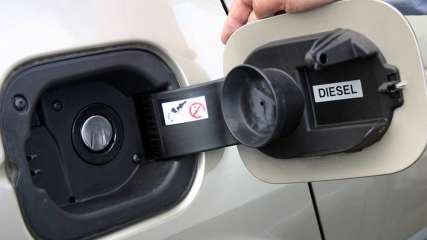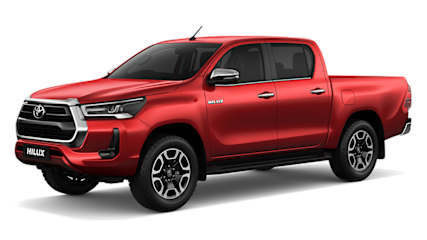Who is the Stig?
By Stephen Corby · 24 Jul 2020
Who is the Stig? It is, or certainly was, one of the great mysteries of our time.What we know for sure is that he was, and is, the unidentified, mysterious and enigmatic “tame racing driver” on the global televisual juggernaut that was, and still kind of is, Top Gear, and it was his job to set the hot lap times by which all of the world’s greatest cars were compared on the Top Gear leaderboard. A simple answer to the question would be Ben Collins, but that’s only one answer, because he was also Perry McCarthy, and Michael Schumacher, and Big Stig and Black Stig, among others. There is currently another white-suited Stig whose identity remains a secret.And then there are the things we know about him that make Stig truly mysterious and amusing, like the “fact" that he never blinks, sleeps upside down, and is scared of bells, ducks and boy Scouts. Some also say that he has two sets of knees, webbed buttocks, a digital face and that if you tune your FM radio to 88.4 you can hear his thoughts.All we really know, for sure, is that he's called the Stig.Not since the boys from Kiss finally took off their make-up to reveal their hard-rocked faces, back in 1983, had the planet been so caught up in the race to find out someone’s true identity. So when Ben Collins - a man no one had ever heard of, despite all the speculation about the secret racing driver being someone famous - outed himself as the Stig, publishing a book called The Man in the White Suit in 2010, it was a huge story.The myth and mystique of the Stig had been built up over many years, and magnified by the success of the Top Gear TV show, hosted most famously by Jeremy Clarkson, James May and Richard Hammond, which was, for several years, the most-watched non-fiction television program… in the world (as Clarkson would bray it).The Stig's identity had been exposed once before, in the form of a newspaper scoop, back in 2003, when Top Gear was only really a big deal in the UK, rather than worldwide.Clarkson and the his good friend Andy Wilman, the producer and genius behind the show, came up with the idea for the Stig when they launched the version of Top Gear we know today - featuring a racetrack, a live studio audience and plenty of crazy races and stunts - in 2002. The two of them wanted a professional racing driver to set fast, and comparable, times on the Top Gear test track, in a segment known as Power Laps, but they struggled to find one who was any good at speaking on camera, so they decided to make him a mute in a suit instead. The name “Stig comes from the private school both attended, where any new boy arriving was always called “Stig”. The idea that Stig was some kind of superhuman being was laid down the very first time Clarkson introduced him as an “it” - “nobody knows its name, and we don't wanna know, because it's a racing driver”.The first Stig, who wore a black suit, was Perry McCarthy, a not particularly famous F1 driver, who went to huge amounts of trouble to maintain his anonymity, wearing his helmet and suit at all times and even putting on fake accents when required to speak.The Stig’s other job on the show was to teach celebrities to drive around the Top Gear track at high speed, for another segment called Star in a Reasonably Priced Car, in which celebrities would set a lap time and be compared with other famous people for their driving skills.Doing this while maintaining his anonymity was yet another challenge for McCarthy, until his identity was revealed by a Sunday newspaper article in January 2003. The Black Stig was then killed off by the show in the first episode of Series 3, after driving off the deck of an aircraft carrier into the ocean at high speed. There has always been some debate over whether he was sacked or resigned.The Stig who would go on to genuine global fame was known simply as white Stig and was unveiled in 2003 and, incredibly, his identity remained a tightly held secret for seven years.During that time his role expanded beyond just doing Power Laps and training celebrities to being more of a comic foil and taking part in some of the show’s iconic races and even its Winter Olympics, in which Stig jumped a snowmobile off a ski jump in Norway.While the show’s hosts always talked up the Stig’s super-human driving abilities, the world speculated wildly about who he might actually be. Suggestions included F1 drivers Damon Hill and Michael Schumacher, musician Jay Kay and even US president Barack Obama (a rumour spread by the show itself).The question “Who is the Stig” is sometimes said to be one of the most asked questions on the internet, and T-shirts bearing the words “I am the Stig”, have made the BBC untold millions in merchandise sales.On one occasion, in 2009, the show allowed the Stig to remove his helmet and reveal himself as none other than Michael Schumacher. This was, of course, an elaborate ruse.When Ben Collins decided to write a book outing himself as the Stig (partly because he felt he wasn’t being paid enough and wanted to cash in), a legal battle erupted with the BBC, which makes the show and sells it worldwide, attempting to stop publication of the book, which they said breached his contractual obligations.After the court case, Collins was sacked, the show’s presenters and producers, and many fans around the world, were very angry at him for ruining all the fun and a search immediately began for a new white Stig. This new Stig was found in a manger in Bethlehem during the show’s Middle East special in 2010, it was a baby Stig but it soon grew to full size, and speed, and remains the official Stig on Top Gear to this day, even surviving his show’s most famous co-hosts, Clarkson, Hammond and May, who have all moved on to a new show of their own, The Grand Tour. Top Gear lives on without them, and with the Stig.In case you were wondering, the short-lived Australian Top Gear show’s Stig was also unmasked by the media as Cameron McConville, a V8 super car driver and Bathurst winner.







.jpg)
.jpg)
.jpg)
.jpg)



_0.jpg)
